For the best monitoring of audio quality, Genelec’s founder Ilpo Martikainen prefers speakers with a neutral sound.
High-end loudspeakers are essential tools for every radio broadcast or production. During an earlier edition of IBC in Amsterdam, I spoke with Ilpo Martikainen of Genelec, a household name in many radio broadcast and production suites worldwide, about his opinions on sound monitoring. His advice? Find not only the perfect place for your speakers, but also the perfect calibration. “You can always return to the zero position.”
“We have built a lot of intelligence inside”

Mathematical correction algorithms are helpful in acoustically challenging situations (photo: Thomas Giger)
Start with broadcast clients
“I was a hi-fi enthusiast, building amplifiers and speakers”, Ilpo Martikainen recalls about his early engineering years. His hobby became a profession when Finnish public broadcaster YLE asked him to design monitor speakers for them, which led Genelec’s foundation in 1978. Orders from other national broadcasters, including RAI (Italy) and NOS (Netherlands), soon followed. He explains this public radio focus from the fact that European countries didn’t have commercial radio until the late 1980s and early 1990s. Government-founded broadcast institutions also tend to have certain quality standards and necessary production budgets. Today, about a quarter of Genelec’s business comes from broadcasting, making production & recording studios the vast majority of its clientele.
 Follow important market developments
Follow important market developments
Do you see different demands for studio equipment than in 1978?
“The quality requirements as such have not changed, but the big budgets, where you renew the equipment in a whole broadcast centre, those times have gone. Occasionally, you hear that someone is building a new broadcast house, or moves TV and radio production into one place, but a lot of production is being outsourced today.”
Analyse & neutralise room conditions
On which technological innovations are you working right now?
“We have been working with adaptive systems”, Martikainen says about their response to an evolving workflow, where productions are not always done in traditional studio buildings with acoustically optimised rooms. They also take place in OB (Outside Broadcasting) vans, or even at home behind a laptop. “We have built a lot of intelligence inside the loudspeakers, so that we can calibrate them to the space where the work is going to happen. Our software, which is partly in the speakers and partly in the computers, measures the acoustic performance. Then we adapt mathematical correction, so that at the engineer’s position, we see a much better result.” He expects that smart speakers are the future, also because of emerging markets like independent musicians, who are producing songs in their bedroom.
“The job of a monitoring speaker is to tell the truth, whether it’s pleasant or not”
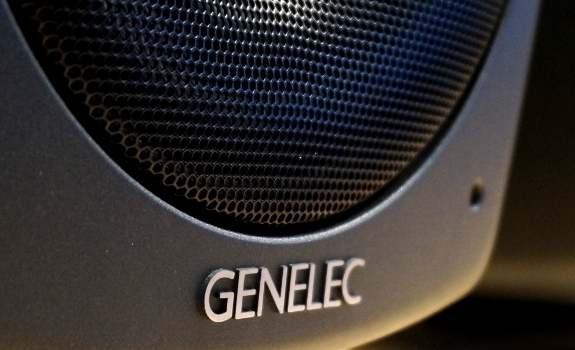
From an engineering standpoint, Ilpo Martikainen thinks that speakers should be neutral (photo: Thomas Giger)
Agree on reasonable compromises
How would you define the position of Genelec compared to your competition’s, in terms of the products that you make — what, do you think, makes you different?
(Thinks for a few seconds) “Making a product like a loudspeaker, and making it commercially available, means a lot of work, and a lot of compromises. When you design a product, you have certain borderlines regarding size, price, and other aspects. Within these constraints, every company makes design choices; excluding something and including something else. It’s a set of compromises that finally makes a product. The laws of physics are the same for everyone. I would say that we are making balanced compromises (laughs), so that aspects in speaker performance which we find important are well represented.”
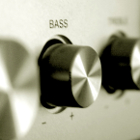 Put quality & reliability first
Put quality & reliability first
Where do you compromise, and where do you not?
“We do not compromise on sound quality and reliability. All speakers are manufactured in the same place; tested in the same way; calibrated in the same way. The compromise is in how much sound we get”, Ilpo Martikainen says about the fact that a smaller speaker usually comes with a lower output volume and with less bass extension.
Ensure completely neutral monitoring
According to you, what are the parameters of a great sound in the radio or production studio?
(Silent for a few seconds) “Well, it depends on what kind of that I’m putting on, but when I’m looking from an engineering standpoint, it is neutrality and truthfulness to the original. Speakers are quality control devices that you have to be able to rely on. The job of a monitoring speaker is to tell the truth, whether it’s pleasant or not. Truthfulness is a reward which I like. From a personal enjoyment point of view, when I hear a good recording of music that I like, I’m very happy. I enjoy classical music. Acoustic instruments are demanding, as you know how the instrument should sound. You go to a concert and hear how an orchestra plays, so there’s always a reference. With other types of music its difficult to say what the correct sound is.”
“If people would use the possibilities, their work would be easier”
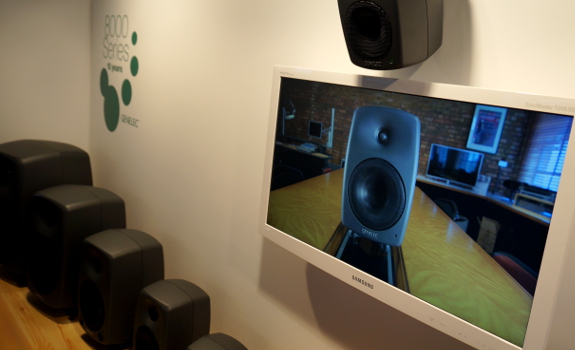
Radio professionals could get even more out of their speakers by calibrating them well (photo: Thomas Giger)
Adjust sounds to locations
What do you think of stations using audio processing to pump up the sound as loud as they can?
“Well, that’s one of the compromises they have to do”, Martikainen replies. “Broadcasters have their own set of parameters that they can work within; they’re making their own set of compromises. Highly compressed; highly distorted sound is, of course, not natural anymore — far from that. But if it is necessary to survive, then the broadcasters have to do it.”
Haha. So maybe, in the end, the listener makes the biggest compromise…?
“Hehe, could be. But if you are listening radio in the car, which has a pretty high background noise, compressing the signal is actually desirable. So that you can hear without the peaks being too loud.”
[audio:http://www.radioiloveit.com/wp-content/uploads/ilpo-martikainen-genelec-founder-interview-ibc-2014-01.mp3|titles=Ilpo Martikainen about audio processing of radio stations]
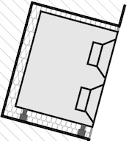 Flush-mount speakers inside walls
Flush-mount speakers inside walls
Do you have best practices for listening conditions in radio studios?
“Setting up the speakers is actually quite complicated. The weakest link in the reproduction chain is the room, and where you’re placing the speakers greatly affects the perception.” Martikainen points out that even adaptive speaker technologies cannot compensate for poorly positioned loudspeakers.
Use available calibration options
Even if Genelec speakers come with calibration technology since 1978, Ilpo Martikainen sees that many audio engineers don’t use this function. “Computer controlled calibration is refining the art, but even if people would only use possibilities that have been around for a long time, their work would be easier, because they can improve the response. I would set up the speakers properly, and not be afraid of the frequency response controls. Many people say: ‘This is factory set; I don’t touch it’, but you can always return to the zero position. If there’s too much bass, reduce it for a more neutral sound, and so on.”
What do you consider to be a generally good setup for the speakers?
“The absolute best setup is to flush-mount the speakers inside a wall, so the speaker’s front panel is on the same level as the wall. But often that is not possible. The next best thing is to read the manual, haha.”

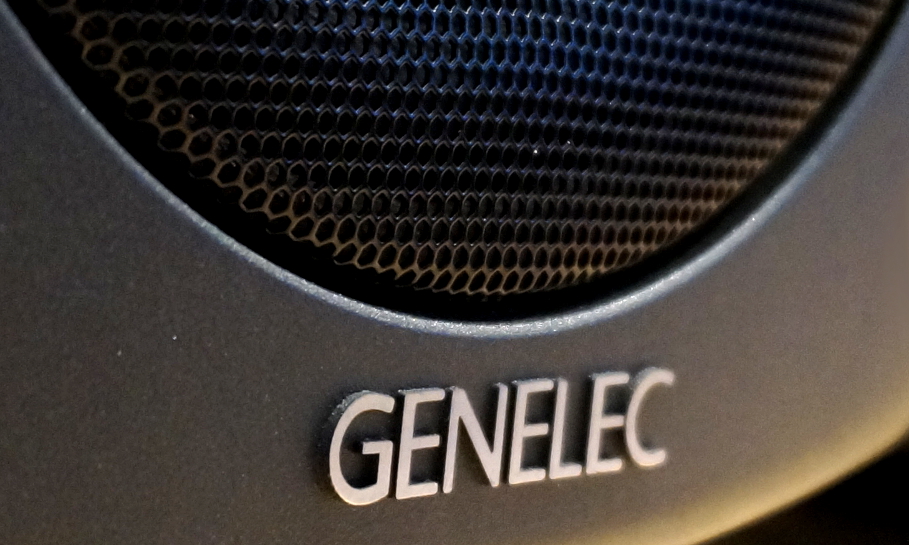




Add Your Comment